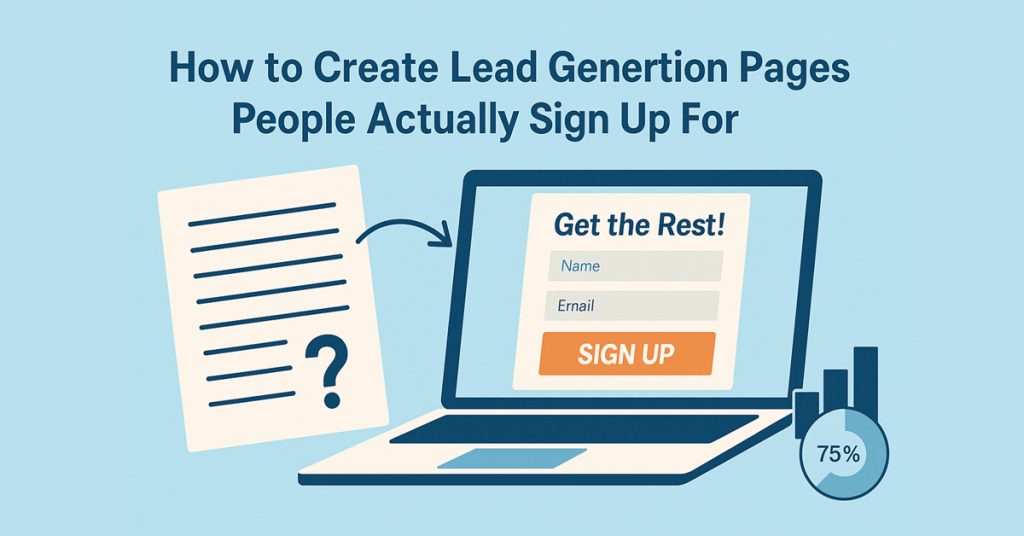
How to Create Lead Generation Pages People Actually Sign Up For
Why People Don’t Give You Their Email (And How to Fix It)
One of the most common mistakes I see when people build a lead generation page is thinking that just asking for a name and email is enough. It’s not. In fact, it’s barely scratching the surface of what it takes to get someone to hand over their contact information today.
Think about it. Our inboxes are full of junk we never asked for. Spam filters work overtime. And most of us hesitate the second we see an opt-in form because we’ve been burned before. So if your page feels even a little spammy, if it looks like a scam, or if it doesn’t clearly show the value someone will get in return, they’re going to click away. Fast.
Give Them a Reason They Can’t Resist
Here’s the deal: no one wakes up in the morning thinking, “I really hope I find a random website to give my email to today.” They give you their email because they believe they’ll get something valuable in return. That’s it.
So before you design another lead generation page, ask yourself, “What’s the real reason someone should give me their email?” If you can’t answer that in one clear sentence, you’ve got work to do.
People are much more likely to opt-in if what you’re offering solves a specific problem, teaches them something useful, or gives them an edge they can’t get elsewhere. In fact, according to a HubSpot study, 90% of consumers are willing to share their email if they believe they’ll receive something valuable and relevant in return. That’s a big deal.
Use the “Cliffhanger” Strategy

One of my favorite approaches is to give away some really good information for free, but leave the “next step” behind the opt-in. It’s the same principle that makes people binge-watch TV shows or stay up too late reading a good book — curiosity.
Here’s how it works:
- Share a few powerful tips, strategies, or insights right on the page. Make them good enough that they could stand alone as real value.
- Then create a natural break. Show them that there’s more — maybe a deeper explanation, a template, a checklist, or a bonus strategy — but they’ll need to opt-in to get it.
- Use curiosity to your advantage. If they’re already learning and seeing results from what you shared upfront, they’ll want the rest.
This approach not only increases opt-ins but also builds trust because you’ve already proven that your content is worth their time.
Ask More Than Once
Another mistake I see all the time: people ask for the opt-in once, usually at the top of the page, and then never again. That’s a missed opportunity.
Most people don’t decide to sign up the first time they see the form. They might skim, read a little more, and then decide they want it. By that point, your form is out of sight. You’ve got to remind them.
A simple rule of thumb I use: place an opt-in opportunity near the top of the page, again in the middle (right after you’ve delivered some real value), and one more time at the bottom. Sometimes I’ll even include a pop-up or slide-in for good measure. Repetition works. In fact, studies show that repeated calls to action can boost conversion rates by up to 80% compared to a single sign-up opportunity.
It’s About Trust, Not Tricks
At the end of the day, lead generation isn’t about tricking someone into handing over their email. It’s about building trust, showing value, and creating a relationship from the very first click.
If your opt-in offer feels like a scam, they won’t bite. But if it feels like an opportunity — something that can make their life easier, better, or more successful — they’ll gladly sign up.
Remember this quote from marketing legend Seth Godin:
“People do not buy goods and services. They buy relationships, stories, and magic.”
That’s just as true for lead generation as it is for sales. If you create a story they want to be part of and back it with genuine value, they won’t just give you their email — they’ll look forward to hearing from you again.
